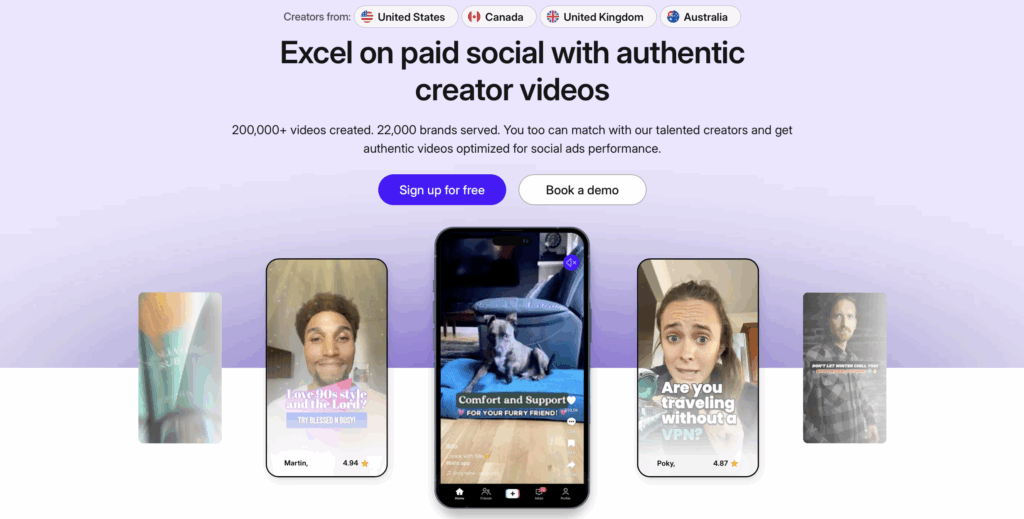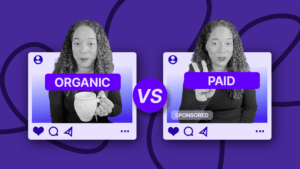Mastering UGC Usage Rights: A Legal Guide to Acquiring Usage Rights & Avoiding IP Pitfalls
With over 7 years of e-commerce experience, Agne has mastered the balance of creativity and performance. From guiding social media strategies to crafting high-converting ads, she’s all about results.

Some business leaders and marketing professionals naively believe that UGC is a free-for-all. Brands can use user-generated content any way they want, they say.
However, adding users’ content to your web pages and social media channels comes with legal risks. Some companies have been sued for misusing it.
For this reason, it is essential to master UGC usage rights and avoid pitfalls. Setting yourself up for success at the start makes it less likely you will encounter problems as you go forward.
This guide deals with various UGC-related legal issues and how to manage them. You will learn how to secure UGC usage rights from creators, ensure legal compliance, and avoid UGC intellectual property pitfalls.
How to Secure UGC Usage Rights from Creators
Securing UGC usage rights from creators is more challenging than most business leaders imagine. Your brand must tick various boxes before deploying content on its website and other channels.
Generally, you do not own content if you didn’t create it. Therefore, you must be careful. Even if a customer or influencer seems to promote your brand, you should never cut and paste their creations and use them without permission.
The primary legal issues you are likely to face are:
- Copyright infringements or violations. UGC creators may claim you used their content without explicit permission, violating their ownership. They may charge you a penalty for each infringement example.
- Misappropriation of likeness. UGC creators may claim you misused their likeness for commercial purposes. For example, you might use their face and associate it with your brand (suggesting an endorsement) without their permission.
- Right of publicity. UGC creators may claim you used their name for commercial purposes without consent. This applies equally to famous individuals and lesser-known ones.
To avoid these problems, focus on gaining legal consent from UGC creators. Securing this in the proper legal framework avoids these issues.
Here’s what to do:
1. Set out your terms and conditions
Write down how you will use the UGC and get the customer or user to agree. Include the following points:
- How long you intend to use the UGC for your marketing campaigns
- The media platforms you intend to use the UGC on
- Whether you want to use the UGC for free or pay for it
2. Ask Permission
Ask the UGC creator for their permission to use their content. Back this up with a signed document saying the user or customer permits you to use their work.
It’s always a good idea to approach the user in a friendly manner. Adopting a helpful, complimentary tone usually works.
Most UGC creators now have “media kits” that set out their terms, conditions, and rates for using their content. These allow them to form collaborations but they may make negotiation more challenging.
Regular users won’t usually bargain with you and some will agree to let you use your content to promote your brand for free. However, you must still obtain permission, even for something as simple as a video review.
3. Draft A Contract
The final stage is to draft a contract that will protect you from legal repercussions if you use a creator’s UGC. When creating this document:
- Set out your terms and conditions
- Mention the costs paid (if any) to the creator for their work
- Detail how long the arrangement will last (and how long you will use the UGC)
- List the channels you will use to disseminate the UGC (i.e. your website and social channels)
The more details you can include in the contract, the better. Covering everything offers you more protection and ensures a happier collaboration. If they disagree with specific terms and conditions, change the agreement or ask a legal professional to help you.
Gaining permission through legal channels is complicated, but you can avoid these challenges using Billo. The UGC creators in our database provide permissions upfront (through their agreements with us) so you don’t have to obtain them separately. Instead, you simply pay for the content you want and can use it for any commercial purpose.
Best Practices for Obtaining Permissions And Ensuring Legal Compliance
The previous section described the formal process for using UGC legally. However, you can always “grease the wheels” further by following best practices. These ensure you and the creator can work harmoniously and benefit from the arrangement.
- State your intent clearly. Don’t be unclear about how you intend to use the UGC. If you want to use reviews to drive conversions on your website, put that in writing.
- Respect the creator’s attribution preferences. Some creators want you to attribute work to them, even if you have full control over the IP. Generally, you should do this (unless there is a special reason not to), even if it isn’t a legal obligation.
- Don’t use content repurposed by third parties. Ensure you only use UGC generated by the creator. Avoid anything that’s been enriched or altered by anyone else.
- Record your permissions. Keep documents detailing your usage rights safe so you can use them in any dispute.
- Remain transparent. Tell the creator how you will use their content, including where you will share it. Check they are okay with your privacy policies and understand the scale at which you will use their work.
Again, Billo takes care of these best practices for you. Our terms and conditions protect clients from UGC creators who may want to exercise control over their content. Creators who create for us agree to relinquish commercial rights to you.
How To Avoid Common Pitfalls in UGC Intellectual Property
The most common UGC legal issue is copyright infringement. Here you use a creator’s content for commercial purposes without their permission. However, there are other problems you may encounter, such as terms of service violations, privacy violations, and so-called “false endorsements.”
Fortunately, you can avoid these by adopting the strategies outlined below.
1. Use UGC Management Platforms Like Billo
Billo protects you from UGC intellectual property issues, preventing creators from suing you for misuse of their content. Our robust terms and conditions agreements with influencers prevent claims against you, allowing you to use the content you receive freely, without limitations.

2. Verify Ownership
Verifying ownership is another way to avoid pitfalls when using UGC. You must check who created it.
For video content, this should be obvious. But for other work such as images of scenery or writing, it may not be as clear-cut.
If someone else produced the work, that can put your brand in a precarious position. The true creator may claim ownership, even if you have an air-tight agreement with the user who submitted it.
3. Avoid Trademark Infringement
Even if you have a solid agreement with the influencer, you should avoid trademark infringement. This violation occurs when UGC contains logos or labels associated with a third-party brand (that the UGC creator doesn’t own).
4. Respect Overseas Laws
Also, be careful to respect overseas intellectual property laws. Some areas have “moral rights” that protect creators and attribution. Therefore, attributing work to a creator is always a good idea, even if your agreement doesn’t require it.
5. Get Permission For Implicit Endorsements
Lastly, get permission from creators for any form of endorsement, including implicit ones. These allow you to use their image or likeness to promote your products and services, even if they don’t do it directly.
Success Stories: Brands That Did UGC Usage Rights Right
While the legal issues surrounding UGC usage rights seem onerous, numerous brands have overcome them throughout history and got their strategy right. Here are some examples to follow:
Starbucks’ White Cup Contest
Starbucks launched its White Cup Contest in 2014 to drive interest in its brand. The company asked customers to decorate their coffee cups, posting their creations online under the hashtag #WhiteCupContest.
The campaign showcased UGC’s power and revealed how brands could align consumer creativity with their marketing efforts. The contest soon created numerous brand ambassadors and generated interest among the company’s audience, inspiring more to get involved.
Spotify’s Wrapped Campaign
Spotify’s Wrapped campaign is another example of UGC done right. It involves collecting data on users’ listening habits throughout the year and then bundling them into shareable “wrapped” graphics they can post on social media.
Spotify’s concept is intelligent because it uses the brand’s intellectual property to drive UGC production. Users personalize the brand’s output to create shareable images of their top tunes for the year.
Doritos Crash The Super Bowl
Lastly, Doritos’ Crash The Super Bowl campaign is another example of how to use and leverage UGC to the fullest effect. Incredibly, this campaign dates from 2006 when UGC was in its infancy. It asked customers to create their personal Doritos commercials, promising to air the top entries at the Super Bowl to millions of adoring fans.
The campaign required UGC creators to share their ideas on social media to gather votes. These turned into mini-campaigns for Doritos, allowing it to reach more people and encouraging higher participation. Ultimately, the concept generated massive buzz, engaging audiences and increasing brand loyalty.
Looking to start the UGC journey?
Creative Manager
With over 7 years of e-commerce experience, Agne has mastered the balance of creativity and performance. From guiding social media strategies to crafting high-converting ads, she’s all about results.

Authentic creator videos, powered by real performance data
22,000+ brands use Billo to turn UGC into high-ROAS video ads.
Common UGC Brief Mistakes Brands Still Make in...
A vague or overpacked brief derails campaigns before they start, [...]...
Read full articleOrganic UGC vs Paid UGC: How Top Brands Drive Gr...
More brands are turning to user-generated content (UGC) to fuel [...]...
Read full articleOrganic UGC: How to Turn Native Creator Posts in...
Short-form feeds spotlight content that feels natural, not like ads. [...]...
Read full article



